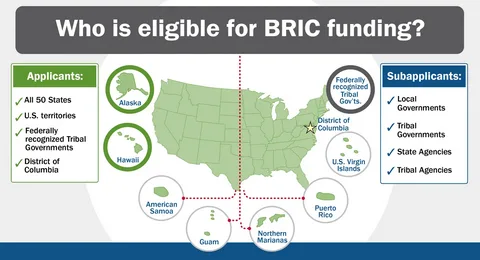The global financial landscape is undergoing a profound transformation, with developing nations at the forefront of innovation in cross-border payments. The BRICS nations—Brazil, Russia, India, China, and South Africa—are driving initiatives aimed at improving payment efficiency, fostering financial inclusion, and strengthening economic collaboration.
Through the implementation of the BRICS Bridge and Central Bank Digital Currencies (CBDCs), these countries are poised to revolutionize the way transactions are conducted on an international scale.
This article delves into the initiatives spearheaded by BRICS, examining how these nations aim to enhance payment efficiency, and the role of the BRICS Bridge and CBDCs in achieving these objectives.

The Need for Payment Efficiency in the BRICS Bloc
In an interconnected world, efficient payment systems are vital for economic growth, especially for economies as dynamic and diverse as those in the BRICS bloc. Each member nation represents a significant share of global trade and GDP, yet their payment systems often face challenges such as high transaction costs, delays in cross-border settlements, and dependency on traditional financial networks dominated by Western economies.
Why payment efficiency matters:
- Facilitating trade: With BRICS accounting for over 23% of global GDP, seamless payment systems can significantly boost intra-BRICS trade.
- Reducing dependency on USD: Many BRICS countries seek alternatives to USD-dominated trade to mitigate exchange rate risks and enhance financial sovereignty.
- Promoting financial inclusion: Efficient payment mechanisms can provide better access to financial services for underbanked populations, fostering equitable growth.
BRICS initiatives, such as the BRICS Bridge and CBDCs, aim to address these needs. By leveraging innovative technologies, they offer promising solutions to streamline payments and reduce systemic inefficiencies.
Exploring the BRICS Bridge: A New Pathway for Cross-Border Payments
One of the most notable initiatives by the BRICS bloc is the development of the BRICS Bridge, a digital platform designed to facilitate faster and more secure cross-border payments. The BRICS Bridge represents a paradigm shift in the financial infrastructure of the bloc, introducing interoperability between the payment systems of member countries.
Key Features of the BRICS Bridge
- Decentralization: The platform minimizes reliance on traditional centralized networks, promoting autonomy for member nations.
- Interoperability: It seamlessly integrates with existing financial systems within the BRICS nations, enabling real-time payment settlements.
- Cost-efficiency: By reducing intermediaries in the payment process, the BRICS Bridge significantly lowers transaction fees.
Advantages of the BRICS Bridge for Member Nations
- Enhanced trade connectivity: Businesses across BRICS countries can transact effortlessly, fostering regional economic integration.
- Reduced currency risks: The platform enables direct transactions in local currencies, bypassing the need for conversions into USD.
- Strengthened digital economies: The BRICS Bridge encourages the adoption of digital payment systems, accelerating the transition to cashless economies.
This initiative reflects the collective commitment of BRICS nations to enhance payment efficiency and build a robust financial ecosystem tailored to their unique needs.
CBDCs: Pioneering Financial Innovation in the BRICS Bloc
Central Bank Digital Currencies (CBDCs) represent another cornerstone of BRICS’ strategy to enhance payment efficiency. These digital forms of sovereign currency are issued and regulated by central banks, offering a secure and efficient medium for transactions.
Why CBDCs Matter for BRICS
- Financial inclusion: CBDCs can bring unbanked populations into the formal financial system by providing easy access to digital transactions.
- Reduced transaction costs: With CBDCs, transactions bypass traditional banking networks, lowering fees for consumers and businesses.
- Transparency and security: Blockchain technology ensures that CBDC transactions are secure, traceable, and tamper-proof.
Implementation Progress in BRICS Nations
- China: The digital yuan (e-CNY) is one of the most advanced CBDC projects globally, with extensive pilot programs in place.
- India: The Reserve Bank of India is testing a digital rupee to facilitate secure and efficient transactions.
- Russia: The Bank of Russia is developing a digital ruble to enhance domestic and cross-border payment systems.
Through CBDCs, BRICS countries aim to modernize their monetary systems, ensuring they remain competitive in an increasingly digital global economy.
The Synergy Between BRICS Bridge and CBDCs
While the BRICS Bridge and CBDCs are transformative on their own, their combined implementation holds even greater potential to enhance payment efficiency within the bloc. Together, they address the twin challenges of fragmented financial systems and reliance on external payment networks.
How the Two Initiatives Complement Each Other
- Interoperability with CBDCs: The BRICS Bridge provides a unified platform for CBDCs, enabling seamless cross-border transactions in digital currencies.
- Enhanced settlement speeds: Real-time payment settlements are achievable when the efficiencies of the BRICS Bridge are coupled with the instantaneous nature of CBDCs.
- Resilience against global disruptions: By fostering a self-sufficient financial ecosystem, BRICS countries can reduce vulnerabilities to external economic shocks.
Real-World Applications
- Trade Finance: Businesses can settle international invoices in seconds using CBDCs via the BRICS Bridge, reducing liquidity risks.
- Remittances: Migrant workers in BRICS countries can send money home quickly and affordably, enhancing financial well-being.
- Investment flows: Cross-border investments can benefit from transparent and secure payment mechanisms facilitated by these technologies.
The synergy between these initiatives underscores the holistic approach adopted by BRICS nations in their quest to enhance payment efficiency.
Challenges and the Road Ahead
Despite their promise, the implementation of the BRICS Bridge and CBDCs is not without challenges. Addressing these hurdles is crucial to realizing the full potential of these initiatives.
Key Challenges
- Regulatory alignment: Harmonizing regulations across BRICS nations is essential for the seamless functioning of the BRICS Bridge.
- Cybersecurity risks: As digital platforms, both the BRICS Bridge and CBDCs are vulnerable to cyber threats, requiring robust safeguards.
- Technological infrastructure: Ensuring reliable digital infrastructure is a prerequisite for the successful deployment of these initiatives.
The Way Forward
To overcome these challenges, BRICS countries must strengthen their collaboration, invest in cutting-edge technology, and establish transparent regulatory frameworks. International cooperation and knowledge-sharing will also play a vital role in ensuring the success of these initiatives.
Conclusion: Shaping the Future of Payments
BRICS initiatives like the BRICS Bridge and CBDCs mark a pivotal moment in the evolution of global finance. By prioritizing payment efficiency, these nations are not only enhancing economic integration within the bloc but also setting new standards for cross-border transactions worldwide.
As these initiatives continue to evolve, they hold the potential to empower millions, foster economic growth, and redefine the global financial landscape. Whether you’re a business owner, a policy enthusiast, or simply curious about financial innovation, the BRICS story is one to watch.
What do you think about the impact of the BRICS Bridge and CBDCs on global payments? Share your thoughts in the comments below!






